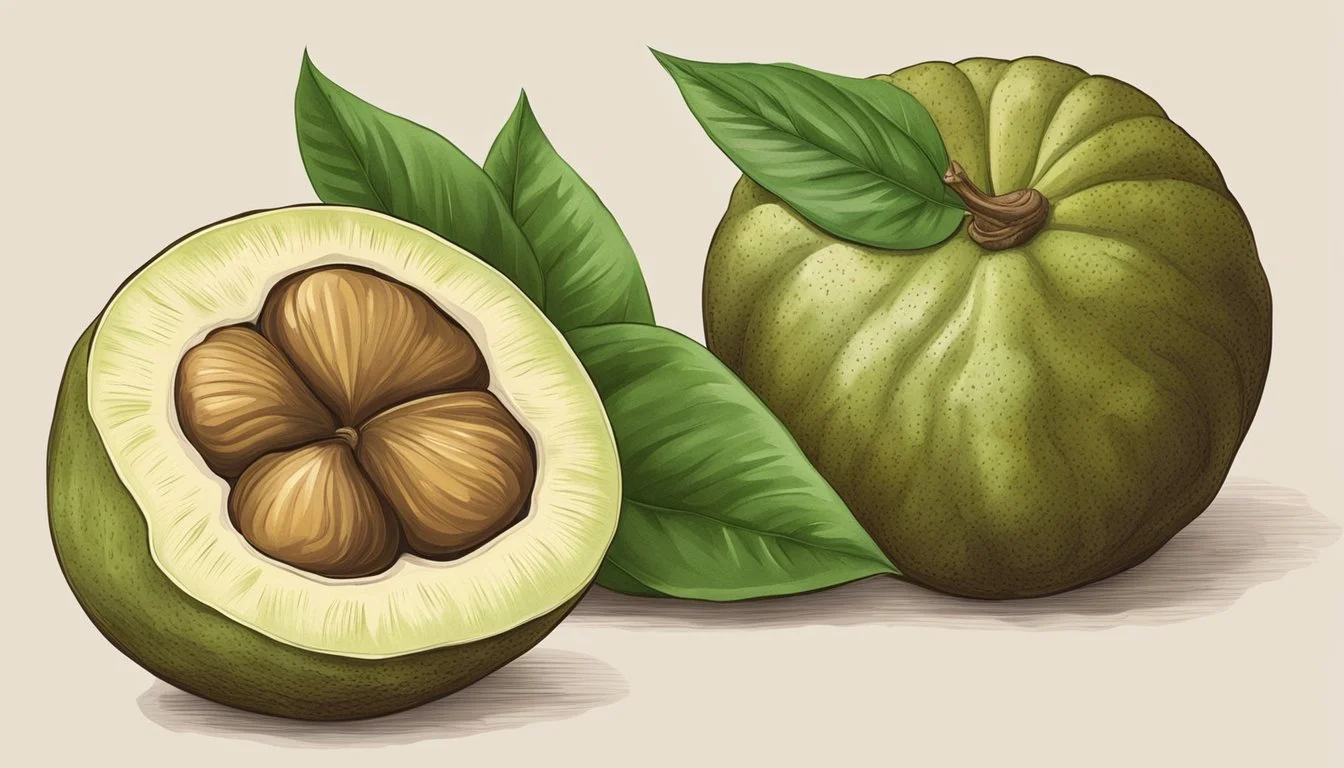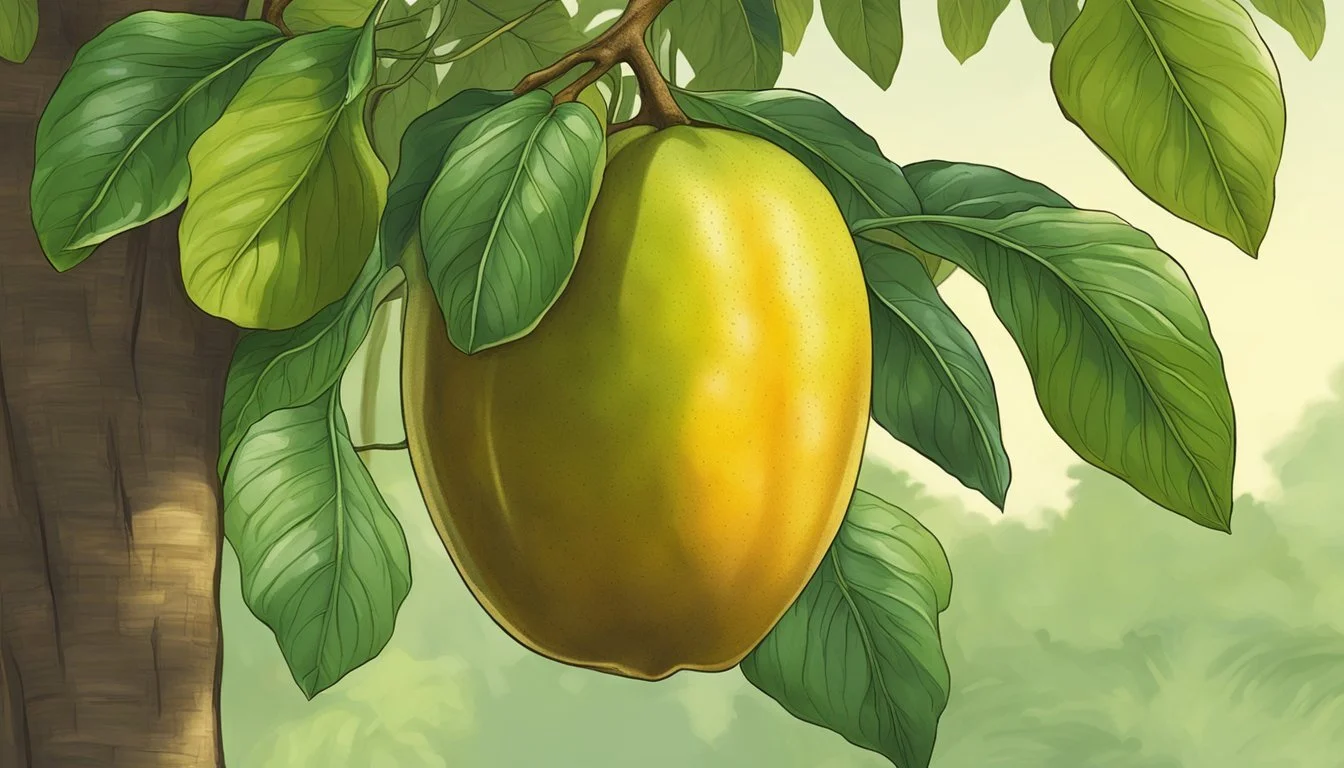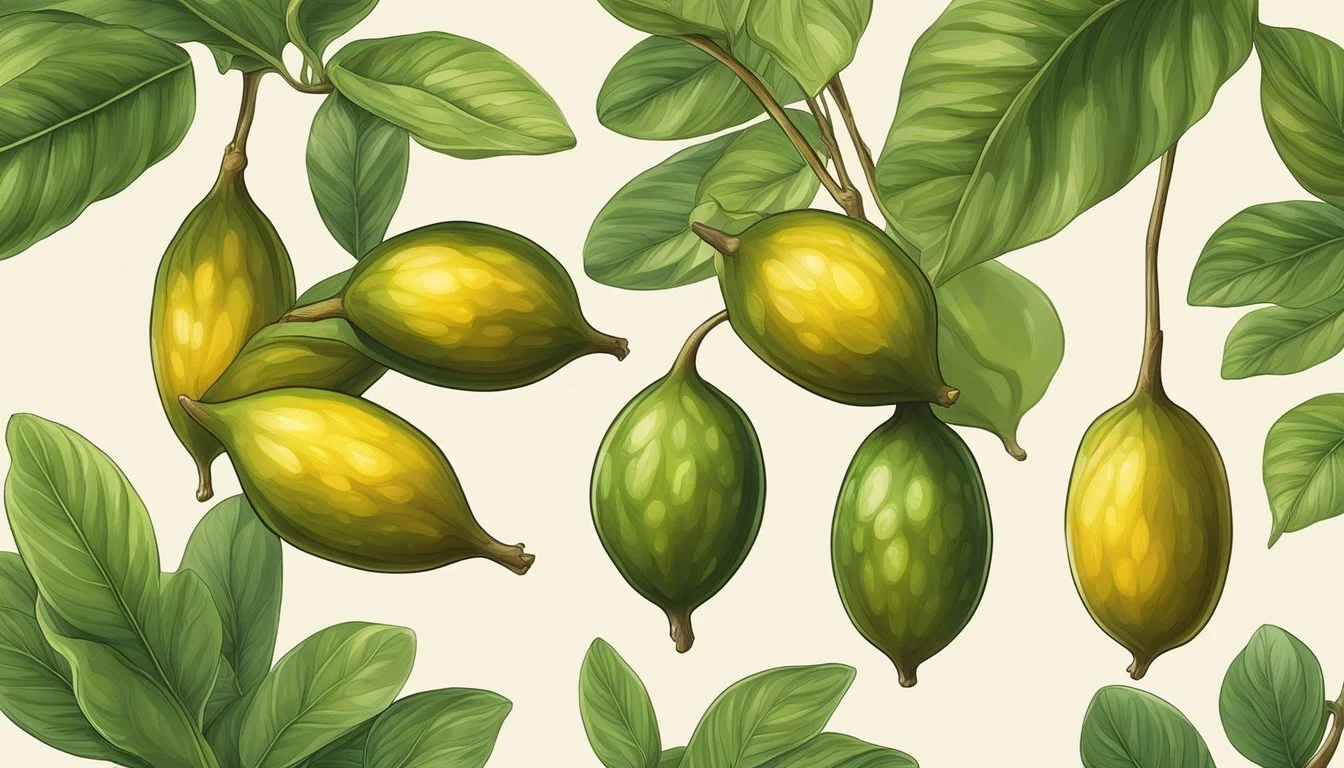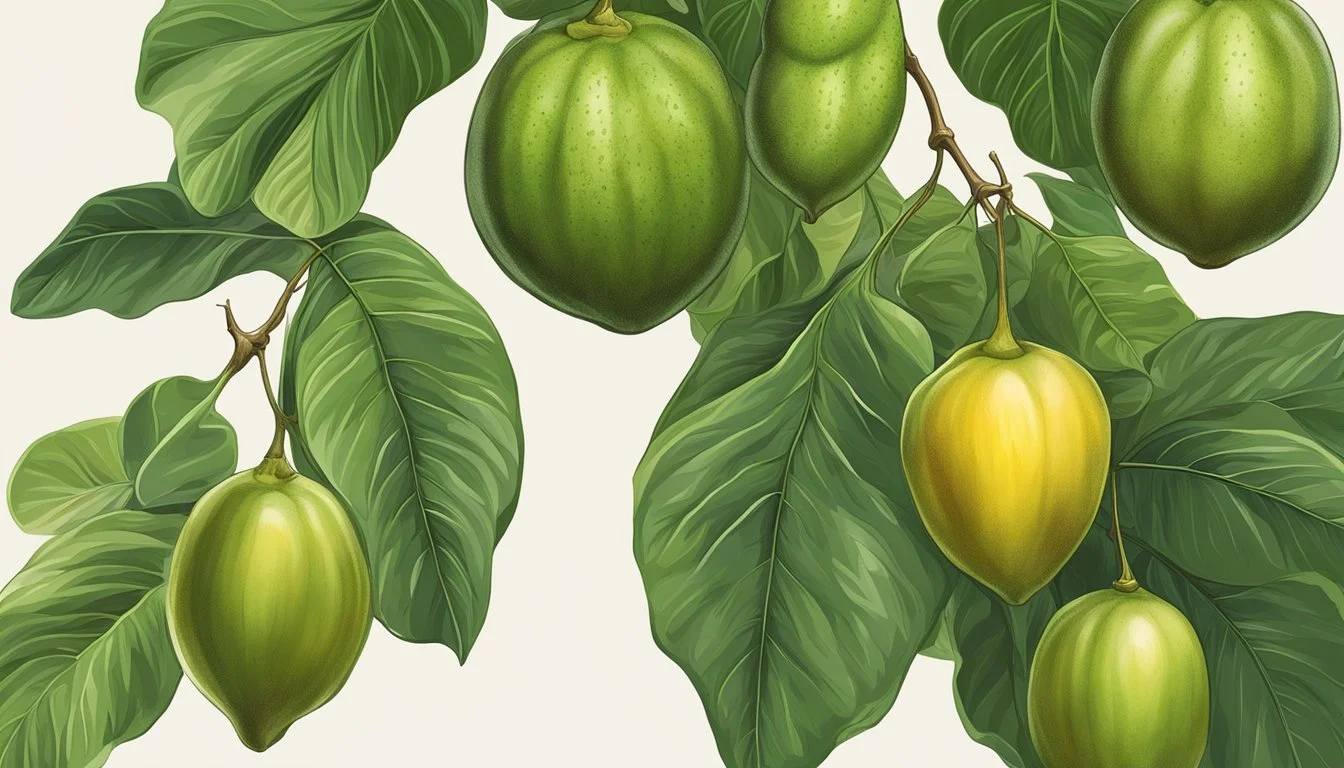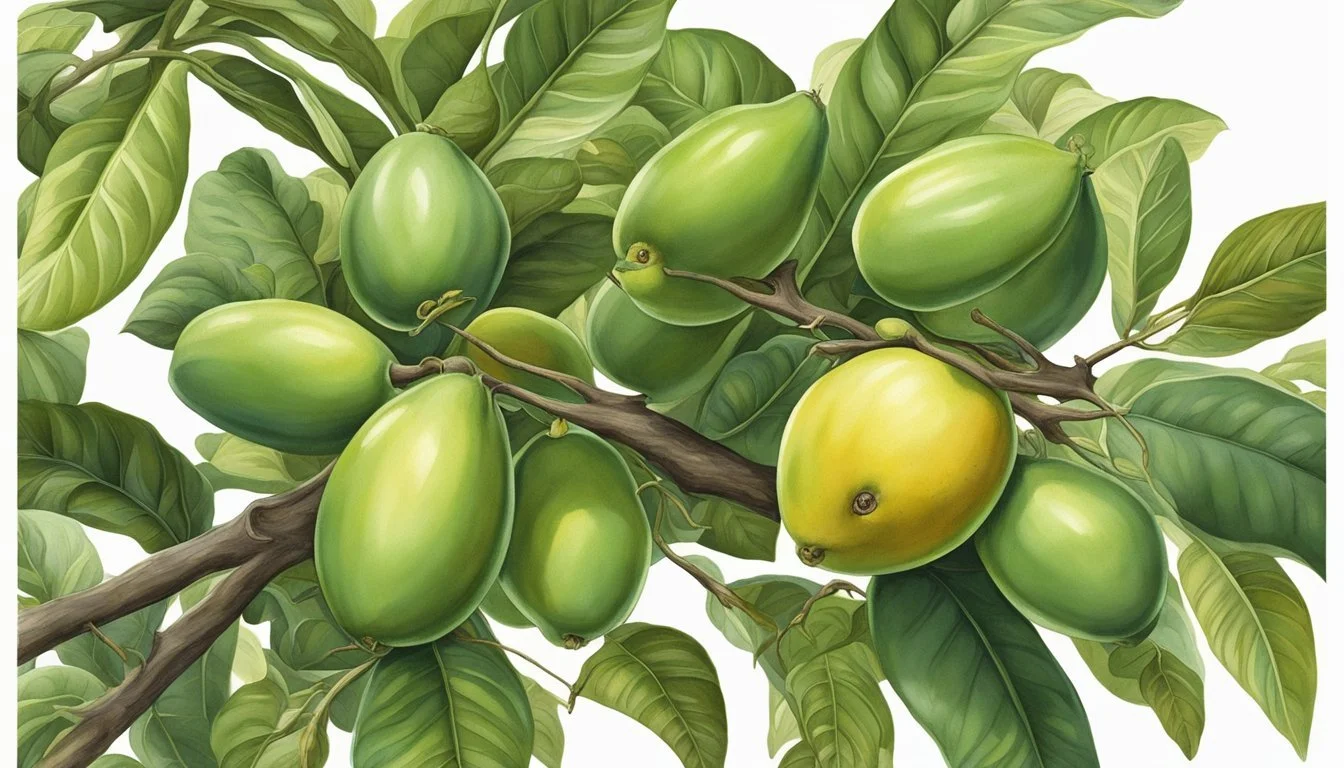How to Tell if a Cupuaçu is Ripe
Expert Tips for Perfect Selection
Cupuaçu, a tropical fruit hailing from the depths of the Amazon rainforest, holds a treasure of flavors and health benefits. Known scientifically as Theobroma grandiflorum, this relative of cacao thrives in the fertile soils of Brazil and other South American countries such as Colombia, Bolivia, and Venezuela. Its unique taste and myriad of applications, from culinary delights to skincare products, mark it as a superfood and a staple in local traditions.
Determining the ripeness of cupuaçu is crucial for enjoying its full potential. As the fruit matures, it transitions in color from green to a rich dark brown, and a gentle squeeze should yield slight softness, indicating it's ready to be savored or processed. Not only is the ripe fruit packed with antioxidants and dietary fiber, but it also carries profound cultural significance and economic value within the Amazon Basin. Mastery of assessing the readiness of cupuaçu can enhance its consumption and utilization while ensuring the fruit's extraordinary qualities are not lost.
Key Takeaways
Cupuaçu is a nutritious superfood from the Amazon, appreciated for its unique taste and health-boosting properties.
The ripeness of cupuaçu can be determined by its color change and yielding texture when pressed lightly.
Proper assessment and harvesting of ripe cupuaçu contribute to its various uses in food, cosmetics, and preservation of traditional practices.
Identifying Ripeness
When selecting a cupuaçu, one should pay close attention to its color, texture, and fragrance, as these are reliable indicators of ripeness.
Color Changes
A ripe cupuaçu's skin transitions from green to brown or dark brown. This rich coloring is a primary indicator of maturity. One should look for an even and deep tone without signs of greenness.
Skin Texture and Firmness
The skin of a ripe cupuaçu fruit should yield slightly to gentle pressure, indicating proper firmness. However, excessive softness or visible blemishes might suggest overripeness or potential internal spoilage.
Fruit Aroma and Fragrance
A cupuaçu's fragrance grows more pronounced as it ripens. One should detect a sweet and pleasant aroma, which is distinctive to the fruit, indicating that the cupuaçu is ripe and ready to be enjoyed. Absence of aroma or unpleasant smells may imply that the fruit is not yet ripe or possibly past its prime.
Internal Characteristics
When assessing the ripeness of a cupuaçu fruit, one must examine the qualities of its flesh and pulp, as well as the condition of the seeds. These internal characteristics are crucial for understanding whether the fruit has reached optimal ripeness.
Flesh and Pulp Qualities
The flesh of a ripe cupuaçu has a distinct creamy texture, signifying that it is ready to consume. Pulp softness is a direct indicator of ripeness; when the cupuaçu is ripe, its pulp should yield easily under gentle pressure. This softness implies the fruit's internal sugars and acids have developed fully, providing the rich, desirable flavor cupuaçu is known for.
Consistency: Look for uniform creaminess throughout the pulp.
Color: The pulp should exhibit a homogeneous, creamy beige color without any signs of greenish areas.
Seed Condition
The seeds within a ripe cupuaçu are surrounded by the flavorful pulp. A ripe fruit will have seeds that are:
Intact: They should be whole and robust.
Embedded: Firmly set within the pulp, indicating they've matured alongside the flesh.
The seeds are enveloped by the pulp, which is a key element in cupuaçu-based products, suggestively reflecting the overall maturation of the fruit. If these seeds are loose or the surrounding pulp is overly liquefied, this could indicate overripeness.
Natural and Artificial Ripening
Ripening cupuaçu can be managed through both natural and artificial means, leveraging ethylene gas, room temperature, and companion fruits.
Use of Ethylene Gas
Ethylene gas, a naturally occurring plant hormone, plays a pivotal role in the artificial ripening process. To accelerate ripening, a cupuaçu can be exposed to ethylene in a controlled setting. Typically, the fruit is placed in a sealed environment, like a plastic bag, and ethylene gas is introduced. This gas is commercially available and is often utilized to induce ripening in various fruits.
Ripening at Room Temperature
For a natural approach, cupuaçu fruit may be left at room temperature to ripen. Room conditions should maintain a temperature of approximately 70-75°F (20-24°C) with a relative humidity level of 85-90%. These conditions mimic the cupuaçu's native tropical environment, enabling the fruit to ripen evenly and naturally over time.
Companion Ripening Techniques
Ethylene gas is also produced by certain fruits, such as apples and bananas. Utilizing these ethylene-producing fruits as companions can facilitate the ripening of cupuaçu. By placing unripe cupuaçu in a bag or container with these fruits, they share the naturally released ethylene, creating a conducive ripening environment. This method is both natural and effective for stimulating the ripening process.
Optimal Harvesting Time
To determine the ideal harvest time for cupuaçu, one must observe physical indicators on the fruit. A ripe cupuaçu typically measures 15 to 25 centimeters in length. Similar to assessing ripe papaya, it is crucial to focus on color and feel.
Size and Color: A mature cupuaçu fruit often exhibits a slight softening and a change in its brownish hair-covered rind. Unlike papaya, which turns from green to yellow or orange, cupuaçu may not show a dramatic color shift, so size and texture are more reliable indicators.
Feel: A gentle squeeze should yield a slight give, indicating the interior pulp is soft and buttery. If the fruit is too firm, it may need more time on the tree.
Additional Signs:
The surface hairs on the fruit become less pronounced.
The fruit detaches easily from the tree when lifted, similar to a ripe papaya's ease of plucking.
In terms of Timing, cupuaçu fruits are often ready for harvest approximately 4 to 5 months after flowering. It's important for the harvester to note that, unlike papaya which may ripen off the tree, cupuaçu's optimal taste and texture are best achieved when allowed to mature fully on the tree.
Indicator: Size
Description: 15-25 centimeters in length
Indicator: Color & Texture
Description: Brown rind with less pronounced hairs, slight give on squeezing
Indicator: Ease of Detachment
Description: Easy separation from branch
Indicator: Harvesting Timeframe
Description: 4 to 5 months after flowering
As one plans the harvest, keeping an eye on these signs will ensure that the cupuaçu is plucked at its peak, offering the finest flavor and consistency for consumption or use in products.
Sensory Evaluation
When determining the ripeness of a cupuaçu fruit, sensory evaluation plays a vital role. This process relies heavily on taste, flavor profile, and the fruit's resistance to pressure, all of which inform one on its ripeness state.
Taste and Flavor Profile
Cupuaçu's taste is notably unique, with a flavor profile that can be described as a mix between chocolate and pineapple, with subtle hints of banana. It's a complex flavor that evolves as the fruit ripens. Unripe cupuaçu is typically more acidic and less flavorful. As the fruit ripens, the flavor sweetens and becomes more pronounced, indicating it is ready to consume.
Feeling the Pressure
The fruit's exterior hints at its ripeness through tactile assessment. When checking pressure, one should:
Gently squeeze the cupuaçu: Ripe fruits yield slightly under pressure but are not overly soft.
Assess the resistance: If the rind resists pressure, it is likely unripe; however, if it feels mushy, the cupuaçu may be overripe.
Engaging these senses allows for an accurate evaluation of the fruit's ripeness, ensuring the best taste and texture experience.
Storing and Preservation
Proper storage techniques are essential for maintaining the quality of ripe Cupuaçu fruit and Cupuaçu products. The methods employed can significantly influence both the taste and the longevity of this exotic fruit.
Short-Term Storage
Ripe Cupuaçu can be kept at room temperature for immediate consumption. For the short-term, storing the fruit in a cool, airy place away from direct sunlight is key to preserving its quality for up to 2-3 days. If one needs to store the fruit for a few days longer, placing it in the warmest part of the refrigerator, such as the crisper drawer, can help extend its freshness. However, it's crucial to avoid temperatures below 50 degrees Fahrenheit, as these can cause damage to the fruit, resulting in mushiness and accelerated spoilage.
Long-Term Preservation
For long-term preservation, freezing is an option. The flesh of the Cupuaçu should be removed, pureed, or cut into chunks, and placed in airtight containers or freezer bags before being frozen. This method can extend the fruit's life for several months without compromising its unique flavor profile. Additionally, Cupuaçu butter—a product derived from the fruit—should be stored in a cool, dark place to avoid rancidity. One can refrigerate or freeze Cupuaçu butter to further prolong its shelf life.
Health and Nutritional Benefits
Cupuaçu is not just a culinary delight; it also boasts an array of health and nutritional benefits. Rich in antioxidants, such as theograndins, this Brazilian fruit helps in fighting free radicals in the body, which are responsible for cellular damage and may lead to diseases like cancer and heart disease.
Vitamins and Minerals: Cupuaçu is a significant source of various vitamins, notably Vitamin A, which is crucial for maintaining healthy skin and vision, and Vitamin C, essential for the immune system. B vitamins, including B1, B2, and B3 (Niacin), play a role in energy metabolism and neurological function.
Heart Health: Its high antioxidant content can help reduce bad cholesterol levels, potentially lowering the risk of heart disease.
Immune Booster: With its impressive Vitamin C content, cupuaçu can improve immune function.
Hydration and Digestive Health: The fruit is an excellent hydrator due to its ability to retain water, evident in the benefits offered by cupuaçu butter. Its dietary fiber content promotes digestive health and can aid in reducing inflammation in the body.
Fatty and Amino Acids: These compounds contribute to overall health, including skin and hair nourishment, and may play a role in weight management by influencing fat metabolism.
In summary, cupuaçu's unique nutritional profile supports hydration, immune health, and may help prevent chronic diseases through its rich supply of antioxidants and nutrients.
Culinary and Commercial Uses
Cupuaçu has a dynamic role in culinary worlds, ranging from gourmet cooking and baking to carving its niche in the chocolate and snack industries. Its versatility and distinct flavor contribute to a growing market demand.
Cooking and Baking
Cupuaçu fruit is esteemed for its unique flavor profile in cooking and baking applications. It is incorporated as a flavor enhancement in both sweet and savory dishes. The fruit pulp can be cooked down to create jam, used as a tropical filling for pastries, or added to sauces that accompany meat dishes, adding a depth of flavor.
Cooking: Enhances sauces and marinades
Baking: Filling for desserts, breads, and pastries
Market Demand and Purchase Tips
The market demand for cupuaçu is on the rise, particularly in health food circles. Consumers turn to cupuaçu as an alternative to chocolate or an addition to energy bars and supplements due to its nutritional profile. When purchasing cupuaçu in a grocery store or specialty market, it's essential to look for fruit that has a firm rind and a pleasant, fruity aroma indicative of its ripeness.
Purchase Tips:
Firm rind
Fruity aroma
Chocolate and Dessert Creations
Cupuaçu is widely used in the creation of chocolate products and various desserts. Its creamy texture and flavor, which has been compared to a fusion of chocolate and pineapple, makes it a popular choice for dessert recipes such as mousse, truffles (What wine goes well with truffles?), and cakes. Chocolatiers also seek cupuaçu as an alternative to chocolate, using its butter to create specialty confections.
Dessert Creations:
Truffles
Mousse
Specialty cakes
Chocolate Products:
Confections using cupuaçu butter as a base
Cosmetic and Skincare Applications
Cupuaçu, a fruit native to the rainforests of Brazil, has made an evident mark in the cosmetic and skincare industry. Its rich content in fatty acids and antioxidants renders it a vital ingredient for promoting healthy skin and nourishing hair.
Use in Lotions and Creams
Cupuaçu is a key ingredient in lotions and creams due to its capacity to deeply moisturize the skin. Skincare products harness the high fat content of the fruit, which aids in hydration retention thereby minimizing the appearance of fine lines and wrinkles. The butter extracted from the fruit, similar to its popular counterpart cocoa butter, is incorporated in body butters and lotions, offering a rich, creamy texture that supports skin elasticity.
Benefits for Hair and Skin
Prodigious in fatty acids, antioxidants, and vitamins, Cupuaçu exhibits a multitude of benefits for hair and skin:
Moisturization: It effectively hydrates, reduces dryness, and can be found in conditioners, hair masks, and leave-in treatments.
Elasticity: The fruit helps to restore and maintain the skin’s elasticity, often featured in products aimed at diminishing fine lines and wrinkles.
Protection: Antioxidants in Cupuaçu, such as Vitamin E, provide protective benefits against environmental damage, which is why it's included in sunscreens and lip balms.
Repair: It also plays a role in skin barrier repair, useful in formulations for compromised skin conditions.
Through the incorporation into cosmetics and skincare products, Cupuaçu continues to be a prized element for maintaining healthy skin and hair.
Environmental Considerations
When determining the ripeness of a Cupuaçu fruit, one must also consider the environmental factors where the fruit is grown. Cupuaçu thrives in the Amazon rainforest, a biodiverse and climate-sensitive area. The health of the rainforest directly influences the quality of the Cupuaçu grown within it. Optimal conditions for Cupuaçu involve a balance of rainfall and humidity that the rainforest naturally provides.
Rainforest Ecosystem: Cupuaçu trees benefit from the complex ecosystem of the rainforest, which supports their growth and fruit development. Any changes in this environment impact the trees' health and, consequently, the fruit's ripeness.
Pollution is a significant concern, as it can affect the Cupuaçu trees' growth cycles and fruit quality. Exposure to pollutants can lead to stunted growth and may alter the internal cues that indicate fruit ripeness.
Air: Pure air is essential for the Cupuaçu's growth, helping ensure the fruit develops fully and provides clear external signs of ripeness.
Soil: Nutrient-rich soil, often found in the Amazon, is crucial for healthy fruit. Pollution can compromise soil quality, affecting the fruit's ripeness indicators.
Water: Clean water is necessary for Cupuaçu trees, and any contamination can disrupt the fruit's maturation.
The Cupuaçu's growth and ripeness can be a barometer for the health of the surrounding environment. When these fruits are ripe and plentiful, it often signifies that the rainforest, their home and haven, is also thriving. Monitoring these environmental variables is key to understanding and determining the perfect time to harvest Cupuaçu.



